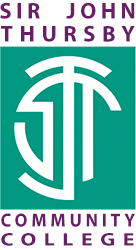Topic 11 Year 7 Mathematics
| Mathematics | |||
| Topic | Area and perimeter of 2-D shapes | ||
| No of lessons | 8 | ||
| When is it happening | Term 2 Year 7 | ||
| What students will learn |
In this unit, the concept of area as a measurable quantity is introduced. This begins by revisiting arrays introduced in previous units for multiplication. Starting with rectilinear shapes, this is built upon to explore the area of other shapes including, triangles and special quadrilaterals. Reasoning about calculating the area of shapes is built up by decomposing shapes and connecting to existing knowledge The generalised expressions for finding the area of shapes are used to introduce rearranging formulae. Solving equations and substituting for an unknown is also practised in this unit. Students also engage with generalised statements about the relationship between area and perimeter. |
||
| Key Knowledge that students should know at the end of 'Topic' | This is the knowledge that students will meet for the first time in this topic |
Using different units of length to describe perimeter ( m , cm and mm) Calculating the perimeter of polygons Estimating perimeter of ‘curved’ shapes Using different square units to describe area( m2 , cm2 and mm2) Using informal counting strategies to calculate area Estimating area of ‘curved’ shape Cutting and combining shapes Analysing the effect of cutting, moving and combining shapes on area Analysing the effect of cutting, moving and combining shapes on perimeter Exploring the perimeter and area of rectangles as the dimensions changes Calculating the area (and perimeter) of rectilinear shapes by ‘combining’ rectangles. Calculating the area of parallelograms by rearranging rectangles Arriving at a formula for the area of a parallelogram Calculating the area of triangles Linking the area of triangles to the area of parallelograms Further problems involving area of triangles |
|
| This is knowledge that students may have met before but will need to deepen their understanding | Calculating area and perimeter of rectangles and squares | ||
| Key Skills that students should be able to demonstrate at the end of 'Topic' | This is the skills that students will meet for the first time in this topic | Be able to use the formulas for area and Perimeters | |
| This is skills that students may have met before but will need to develop | Apply formulas in real life situations i.e. measuring carpet area and wall area etc. | ||
| Key vocabulary that students should know and understand | Area, formulae, rectilinear, array, quadrilateral | ||
| The Big Question | What is the difference between perimeter and area? | ||
|
Key questions that students should be able to answer at the end of the 'Topic' |
Can I find the area of a compound shape? | ||
| Can I compare areas of shapes and use this information to draw new shapes? | |||
| Can I find the perimeter and area of shapes, including compound shapes? | |||
| What is a rectilinear shape? | |||
| How do I find the area of a parallelogram? | |||
| How do I find the area of a triangle? | |||
| How can I use my knowledge of area and perimeter to solve more problems? | |||
